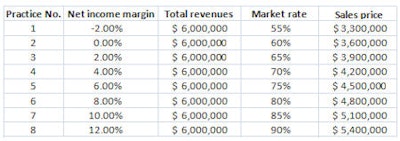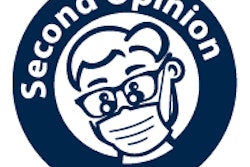
At some point in a dentist's career, the purchase or sale of a practice will become an issue to be considered. To enable the owner-dentist to become more savvy when dealing with other dentists, partnerships, and private equity firms when they show interest in acquiring your business, consultant Thomas A. Climo, PhD, offers the four methods of valuing dental practices. This series of three articles will increase your knowledge of dental practice evaluation and the methods employed for valuing dental practices.
 Thomas Climo, PhD, is a dental practice management consultant and a past professor of economics in England.
Thomas Climo, PhD, is a dental practice management consultant and a past professor of economics in England.The four methods of valuing a dental practice are listed below:
- Percentage of prior-year sales
- Net income (the Warren Buffett approach)
- Earnings before interest, taxes, depreciation, and amortization (EBITDA) approach (ignoring depreciation)
- Market rate multiples
These methods are, first, a canvasing tool outlining and describing the valuation alternatives available for determining the worth of a dental practice, no matter the ownership model. Second, as there is increased participation of group practice dentistry with most groups operated by a dental practice management (DPM) company having private equity money behind them, the fourth method provides a "new" multiples pricing model used by private equity when considering buying a set of dental practices.
The third purpose is to contrast and analyze this newer valuation method together with the ones more familiar to dentists.
The first article includes this introduction and the first method. The second article covers method 2, with methods 3 and 4 and also an author's note covered in the final article.
Method 1: Percentage of prior-year sales
This is by far the most common method for evaluating solo practices owned and operated by a solo practitioner dentist, and has no application for the valuation of practices run by DPMs. It is the most simple but also the least trusted of methods. It has no grounding in economic science or practice, and is no more than a crude measuring stick to the three other better methods to be discussed in upcoming articles. It swings from grossly exaggerating the value of a dental practice to grossly undervaluing a dental practice, and only by luck will the pendulum swing in the direction of a correct valuation.
“This common percentage application on prior-year revenues is more fiction than fact.”
But even then, its "correctness" can only be confirmed by correlating its value with an application of one of the other three methods of valuation. Since it has no support in economic theory, percentage of prior-year sales is a secondary method of valuation contingent on some other method to verify its accuracy.
I have tried over the years to place this method into a more rational and less bizarre concept than the simple, oft-repeated valuation of "75% of prior-year revenues." This common percentage application on prior-year revenues is more fiction than fact. Two business entities each generating $1 million in revenues in which one drops half the revenue to the bottom line and the other drops nothing yet are valued at the same price of $750,000 defies any economic understanding of a connection between how a business performs and how a business is valued on that performance. Why bother with an income statement if you only need a revenue number?
Revenues are only one aspect of performance, and a top line one at that. To judge true operating performance, it is necessary to drop down the line items of an income statement into either EBITDA or net income. This rationale led to my creating the following table from a previous DrBicuspid.com column as proxy for using percentage of prior-year revenues in a meaningful and less artificial way. It drives the percentage number to be used in the formula off net income margin ("A financial lesson for dentists," October18, 2012).

Low net income margins have lower percentages, so that eight different practices having the same revenue stream create eight different valuations, listed as "sales price" in the table. Since double-digit margins exist mostly in practices operated by DPMs, the prevalent percentage rate for a solo practitioner is in the 65% to 75% range. For purposes of the remainder of this article, we will use practice No. 5 having a $6 million revenue stream and a net income margin of 6.00%.
Method 1 evaluates practice No. 5 as having 75% of prior-year revenue of $6 million = $4.5 million.
Note: The reader is invited to change the net income and EBITDA margins in the illustration that followed analysis and valuation of practice No.5. The higher the margins move, the more likely that positive and not negative multipliers will be achieved with a valuation number outstripping prior year revenues. 6% and 12% net income and EBITDA margins are too low as indicators of performance for a positive multiplier to result. Try 15% and 21% -- the margins for net income and EBITDA I use in my white paper ("Standardizing the financial reporting of dental practices," January 29, 2013) and watch positive multipliers emerge for the valuation methods with the exception of method 1, which may reach 1.0 but no higher, and methods 4b and 4c in which Medicaid accounts for half or all of a practice's revenues.
Some readers of this valuation article may be unfamiliar with use of the abbreviated perpetuity formula used herein, being more familiar with discounted present value and its formula:

Where "C" stands for either EBITDA or net income," j" is the date of valuation, "r" is the cost of capital, and "n" is the number of years quantified. However, when "C" is the same number every year -- which is what repeatability means -- this formula mathematically reduces itself to the perpetuity formula:
V = Cj ÷ r
Thomas Climo, PhD, is a professor emeritus of accounting and finance at a major university in the U.K. He has published extensively about the importance of modern managerial and financial decision-making for dentistry. He is a consultant to corporate and solo practitioner dental practice management companies in the states of Arizona, California, Connecticut, Nevada, New Hampshire, New York, and Massachusetts. He can be reached by email at [email protected] or by telephone at 702-578-2757.
The comments and observations expressed herein do not necessarily reflect the opinions of DrBicuspid.com, nor should they be construed as an endorsement or admonishment of any particular idea, vendor, or organization.



















